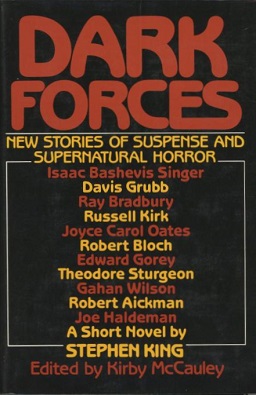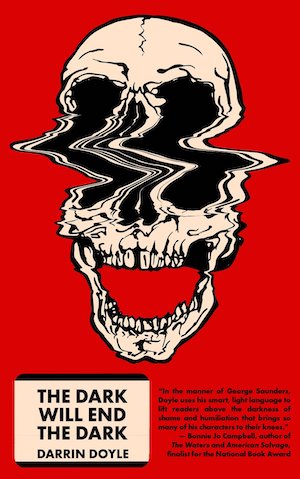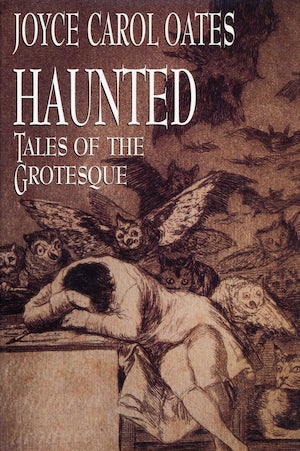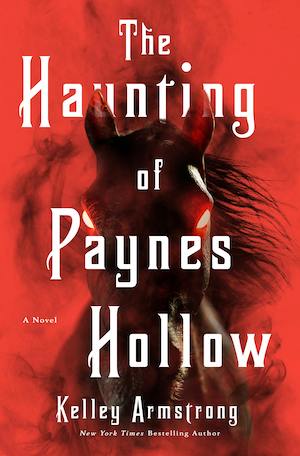-
The Night Before Christmas: A Retro Review
Horror fiction icon Robert Bloch (1917-1994) had an often-quoted quip: “I really have the heart of a small boy. I keep it in a jar on my desk.” Indeed, Bloch had a deliciously deviant sense of humor. Irony permeated his writings, and the ending of his short story “The Night Before Christmas” exemplifies Bloch’s penchant for twisted wit. Originally published in the seminal anthology Dark Forces edited by Kirby McCauley in 1980, the tale remains shocking and consummately Blochian. The narrative is told in retrospect by an artist in Los Angeles who receives a commission to paint a portrait. Although reluctant to engage with the shipping magnate who requested his…
-
Happy Turkey Day
The collection of stories featured in The Dark Will End the Dark by Darrin Doyle display a fondness for the surreal. There’s a sense of reverence for Franz Kafka, most particularly his famous novella “Metamorphosis,” in which the protagonist wakes up transformed into a giant insect. Doyle’s writing also exudes a fondness for the Theater of the Absurd, finding a sort of solace in the comedic aspects of preposterously taxing situations. Reading fifteen tales in this vein can become rather repetitive. Perhaps that’s why I am choosing to focus on one story; a yarn that differs from the rest in terms of more detailed characterization, and more depth in general.…
-
Thanksgiving: A Retro Review
The Christmas ghost story is a component of horror fiction. Knowing that made me wonder about ghost/horror stories pertaining to Thanksgiving. Did such things exist beyond the standard Thanksgiving non-fiction anecdotes of a party going disastrously awry, or an accident involving a frozen turkey? I turned to the Internet and found AI suggestions regarding slasher movies that seize upon various holidays, Thanksgiving included, for subtext. And was also guided to regional folk tales that purportedly took place on the day. Digging deeper, I happened to find a reference to a Joyce Carol Oates short story that had the title “Thanksgiving.” I tracked it to a collection of her stories published…
-
The Haunting of Paynes Hollow
While an undergrad at UCLA many years ago, I took a class on review writing in the arts. One of the guest lecturers wrote book reviews for the Los Angeles Times. He confessed that being a book critic led to certain prejudices. He had grown tired of specific types of novels, and passed on reading them. Although he named three “subgenres” that he refused to review, I only remember two: novels set in Florida, and narratives that featured talking animals. This may seem rather eccentric but now, after years of being a book critic myself, I do understand. And it is best to acknowledge prejudices and biases. When reviewing a…
-
The October Film Haunt
A sense of community, of belonging, is a wonderful feeling. In The October Film Haunt by Michael Wehunt looks at the flipside of craving a tribe; what happens when community becomes a cult, when belonging turns into a fetish, when that emotional high can only be sustained by internet rabbit holes and the like. All of us horror fans get a psychological boost when we mingle with our kind, and author Wehunt smartly plays upon that camaraderie while probing the tenuous boundaries between enthusiasm and dangerous excess. The narrative is canny in referencing horror fandom avatars and for employing meta in a manner guaranteed to amuse the targeted reader. There…
-
One of Us
“Weird” is a complimentary word in the lexicon of horror fiction. One of Us, written by Dan Chaon is one of the weirder books I’ve read. It’s very literary and cinematic in allusions; I can easily fantasize a film adaptation sumptuously directed by Guillermo del Toro. The narrative largely unfolds in 1915, a time when the world was in flux and keen on cultural oddities. Carnivals and sideshows satiated the appetite for the bizarre. Author Chaon employs this universe to unveil an outlandish narrative that is tantalizingly peculiar. At times the novel is heartbreaking. In other instances, it is hilariously absurd and facetious, chock full of references warped by the writer’s…
-
The Arrows: A Tribute to Chelsea Quinn Yarbro
Prolific author Chelsea Quinn Yarbro died on August 31 of this year. She left a literary legacy that exceeded 80 books in a variety of genres. In the horror field she was best known for the St. Germain series, which began in 1978, featuring the eponymous legendary vampire. St. Germain’s exploits ended in 2014, with Sustenance, a collection of novellas and short stories. A nice lengthy run for the fictional 4,000-year-old vampire, who the author resurrected almost on an annual basis. Yarbro was well versed in many subjects, as I discovered firsthand during a conversation with her at a convention several years ago, and was adept at writing in the…
-
Sleep No More: A Tribute to Greg Iles
Greg Iles defied expectations. He was diagnosed at age 36 with multiple myeloma in 1996, but unlike many who succumb to the illness within a few years after diagnosis, it didn’t reach the critical stage for him until the 2020s. He died on August 15 of this year. In 2011, he was severely injured in a car accident, which resulted in amputation of his left leg. That was a three-year recovery period, but established author Iles continued his writing and produced what is perhaps is most lauded body of work, known as The Natchez Burning trilogy. Years before that collective magnum opus, he dabbled in the horror genre. Sleep No…
-
Fiend
Alma Katsu has built a solid reputation as a writer of historical horror fiction. With Fiend, her latest novel, Katsu shifts gears, crafting a work set in present day. The publicity blurbs describe it as Succession mixed with the supernatural, and it is refreshing to see such truth in advertising. Of course, the premise of the popular television series, an obscenely wealthy family’s misuse and abuse of power, is not new. More dramatic takes can be found in theatre, with examples such as Shakespeare’s tragedy of King Lear, and two of the great Lillian Hellman’s plays: The Little Foxes (1939) and its prequel, Another Part of the Forest (1946) which…
-
Together
The Body Horror film subgenre tends to fall into two categories: Relevant/Statement, such as the 2024 satire The Substance, which skewered the obsessive excesses of the show business youth fixation in a very meta excessive fashion, or blithefully mindless grotesqueries like the segment “The Lonesome Death of Jordy Verrill” in Creepshow (1982) which made no pretense of striving for social significance. When I decided to see Together, I was of two minds. Struggling with the inevitable gross-out factor yet still intrigued by the premise, I wound up having a private screening at the local multiplex. The film had already been in theaters for some weeks and the showtime I selected…









